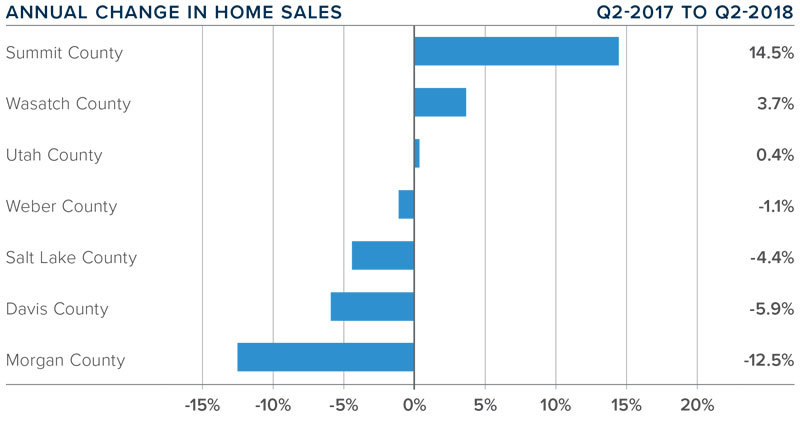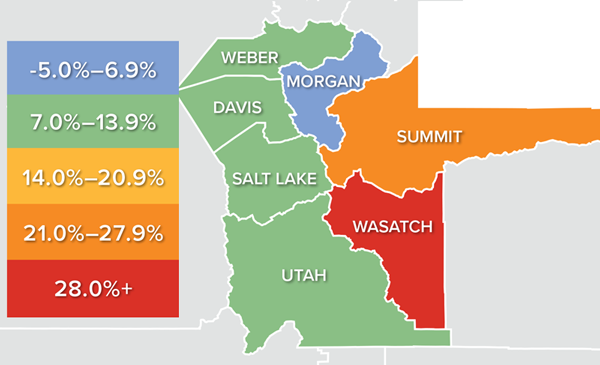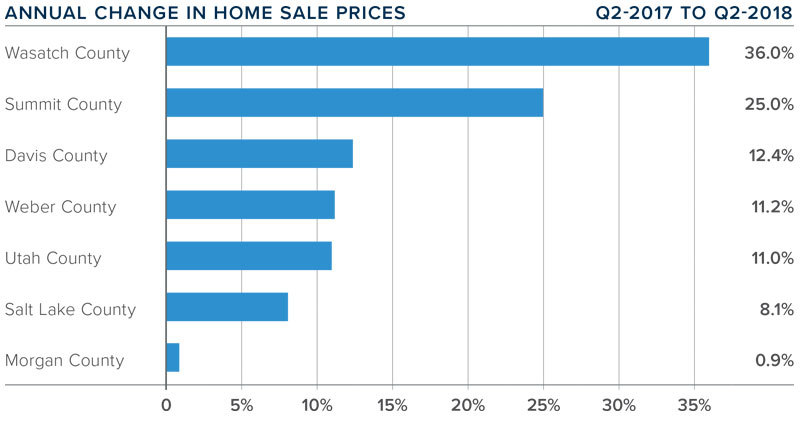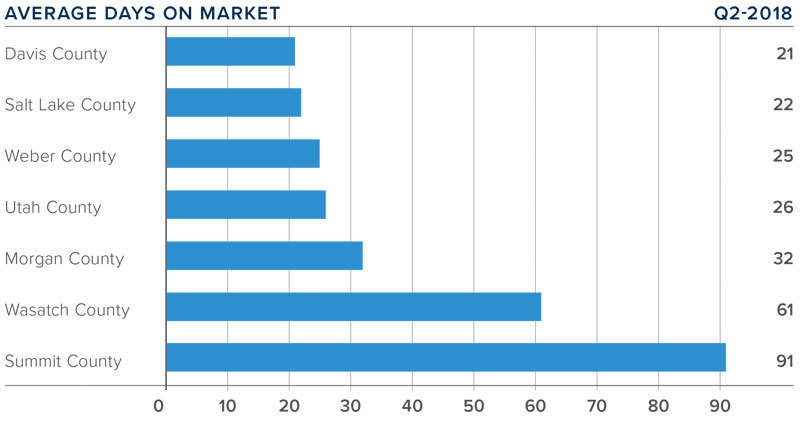
The following analysis of select counties of the Utah real estate market is provided by Windermere Real Estate Chief Economist Matthew Gardner. We hope that this information may assist you with making better-informed real estate decisions. For further information about the housing market in your area, please don’t hesitate to contact your Windermere agent.
ECONOMIC OVERVIEW
According to the Labor Department, Utah added 49,800 non-agricultural jobs over the past 12 months, representing a substantial growth rate of 3.4%. For perspective, the U.S growth rate is running at about 1.6%. Monthly employment gains have averaged 4,520 new jobs per month so far in 2018. I am becoming increasingly confident that we will end the year having added 50,000 new jobs.
In February, the state unemployment rate was 3%, down from 3.3% a year ago.
HOME SALES ACTIVITY
- 9,750 homes sold during the second quarter of 2018, representing a drop of 2.6% from the same period in 2017.
- Total sales activity rose in three of the counties analyzed in this report, the largest of which was in Summit County, which had a substantial 14.5% increase. Of the four counties that saw sales drop, the greatest decline was in Morgan County, where sales were off by 12.5%.
- Listing activity continues to run at well below historic averages, which is causing home sales to drop across the region. The average number of homes for sale in the second quarter was down 14.8% from a year ago.
- It is clear from the data in this report that low supply continues to have a negative effect on home sales.

HOME PRICES

- The average home price in the region continued to rise in second quarter with a year-over-year increase of 12% to $369,831.
- In addition to Wasatch County, four counties saw double-digit price increases when compared to a year ago.
- Price appreciation was strongest in Wasatch County, where home prices rose by a substantial 36%. Although this sounds extreme, it is a very small market and subject to major swings.
- The takeaway from this data is that demand continues to exceed supply, which is causing upward pressure on home prices.

DAYS ON MARKET
- The average number of days it took to sell a home dropped by five days compared to the second quarter of 2017.
- Homes sold fastest in Davis and Salt Lake Counties and slowest in Summit County. In all other counties, days on market either remained static or dropped compared to the second quarter of 2017.
- During the second quarter of this year, it took an average of 40 days to sell a home in the region.
- The takeaway here is that the market remains robust, with well-priced and well-positioned homes selling rapidly.

CONCLUSIONS
 This speedometer reflects the state of the region’s real estate market using housing inventory, price gains, home sales, interest rates, and larger economic factors. For the second quarter of 2018, I left the needle at the same position as first quarter. Listing activity — while still well below the level I would like to see — is showing some signs of improving, which will be a relief to would-be home buyers.
This speedometer reflects the state of the region’s real estate market using housing inventory, price gains, home sales, interest rates, and larger economic factors. For the second quarter of 2018, I left the needle at the same position as first quarter. Listing activity — while still well below the level I would like to see — is showing some signs of improving, which will be a relief to would-be home buyers.

Matthew Gardner is the Chief Economist for Windermere Real Estate, specializing in residential market analysis, commercial/industrial market analysis, financial analysis, and land use and regional economics. He is the former Principal of Gardner Economics and has more than 30 years of professional experience both in the U.S. and U.K.
 Facebook
Facebook
 X
X
 Pinterest
Pinterest
 Copy Link
Copy Link



